CAA News Today
An Interview with Jim Hopfensperger, the New President of CAA
posted May 24, 2018
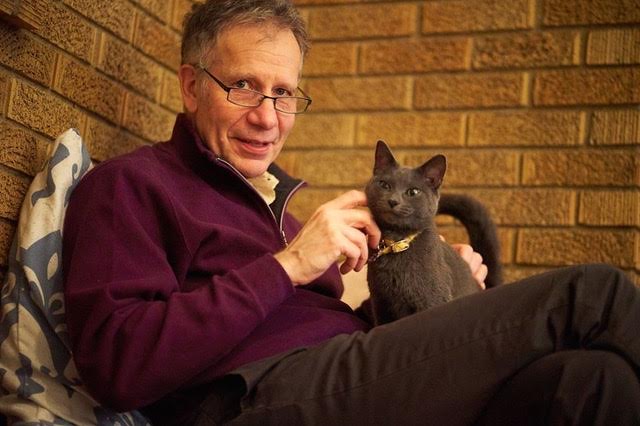
Jim Hopfensperger at home.
As of this month, Jim Hopfensperger, professor of art at Western Michigan University’s Gwen Frostic School of Art, is CAA’s new president for the 2018-2022 term. As a professor and artist with a wealth of experience, we thought it would be a great opportunity to ask Jim his thoughts on CAA and the field at-large. CAA media and content manager Joelle Te Paske spoke with him earlier this month.
JTP: Hi Jim! Thanks so much for speaking with me. How are you?
JH: Very well, Joelle. Thank you so much for taking the time to visit!
JTP: To get us oriented, where did you grow up?
JH: My spouse, Jane, and I were raised in the upper Midwest. While career choices took us to Pennsylvania and Massachusetts, we returned “home” to Michigan eighteen years ago to be nearer aging family members.
JTP: And what did you study?
JH: I was educated as a craftsperson, working primarily in non-ferrous metals such as silver, gold, and copper. During a sabbatical leave from my faculty position at Penn State University in the early 1990s, I was presented the opportunity to work in a furniture studio in Massachusetts. Within a few weeks I was totally hooked, gifting my metal working tools to a younger artist and moving forward as a furniture maker.
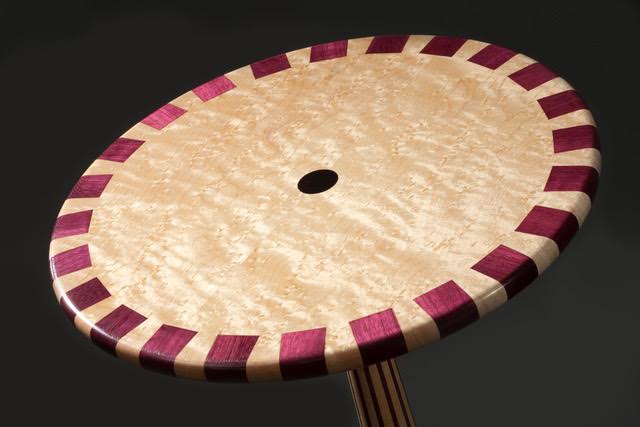
Jim Hopfensperger, Shaker Purple, 2012
JTP: What drew you to the work you do now?
JH: I am drawn to how creating art/design objects—one-at-a-time and by hand—reinforces and reaffirms what it means to be a human being. Thinking with my hands, my eyes, and my mind to conceive well-designed and useful articles makes me feel whole. Perhaps I am a kinesthetic thinker/learner? It also seems possible that, for better and for worse, my sense of self is simply anchored in making things. The non-existent term “neuroceutical therapy” comes to mind!
JTP: What is exciting to you as the incoming CAA president?
JH: The forces of change are in motion all around us. It is a truly exhilarating time to be in the business of living!
As for CAA, a raft of research suggests that healthy organizations prosper when focusing efforts along two key pathways: 1) identifying and strengthening essential core competencies and 2) systematically exploring future capacities. This means sustaining CAA’s outstanding programs and services while simultaneously identifying the organization’s next purposes. Full attention to both matters seems essential if we are to extend a highly distinguished history of advocacy for artists, art historians, scholars, curators, critics, designers, collectors, and educators. I am grateful for this opportunity and excited about the work ahead.
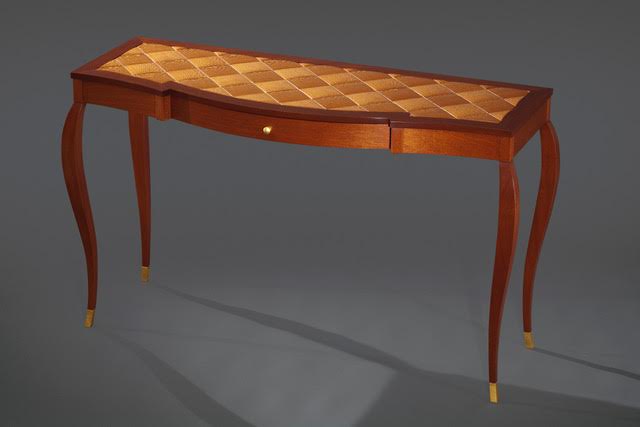
Jim Hopfensperger, Deliberation No. 7, 2005
JTP: What work has been done over the past few years that you would like to build on? What would you like to see happening at CAA in the next year? How about in the next ten?
JH: Clearly, CAA remains an eminent learned society. At the same time it is increasingly fulfilling its potential as a professional association that serves members across educational, curatorial, scholarly, and creative pursuits. In the short term I am confident CAA will remain a strong association and identify more ways to support members in their professional lives.
Over the next few years a pivot toward some key constituencies might make strategic sense. Those include 1) the burgeoning ranks of contingent employees upon whom educational and cultural institutions have become increasingly reliant; 2) the large number of design and new/emerging media practitioners graduating from art and design programs; and 3) the community of international scholars, artists, and designers steadily advancing global perspectives. I look forward to working with CAA members, staff, board, and other stakeholders to map a future wherein these colleagues will be well served.
JTP: What has been a memorable professional moment for you at a CAA Annual Conference?
JH: I am deeply invested in the fellowship aspects of CAA. My fondest memory involves mentoring in the Professional Development Workshops at the Annual Conference in 2000. One my mentees was, as I, trained as a metalsmith. We worked closely after that conference to identify strategies for achieving his professional goals, and he eventually accepted a splendid academic position. In return for my service, and for each of the past eighteen years uninterrupted, he has gifted to me a handcrafted metal ornament to hang on our family holiday tree. Simply precious! (And if you are reading this Professor James Thurman, a wholehearted “Thank You!” is long overdue.)
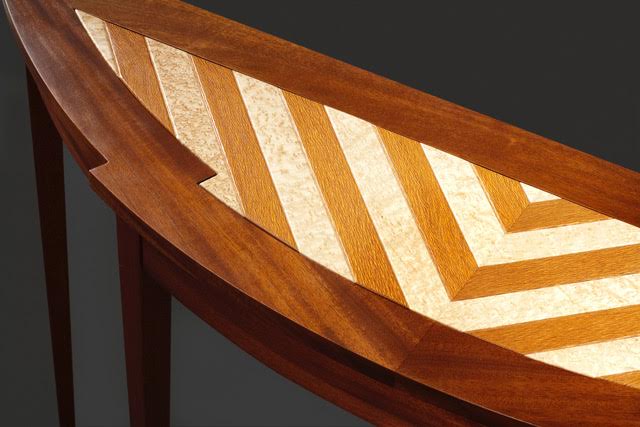
Jim Hopfensperger, Deliberation No. 9, 2013
JTP: What would you say is the number one challenge facing higher education?
JH: Excellent question. My two cents: Adapting to the startling, inevitable pace of cultural and technological change is an operational necessity. Yet, communicating the value of an educated populace appears to be our most immediate and pressing challenge. Making the case for the causal relationship between educational opportunities and the ascendance of an increasingly ethical, moral, and empathetic society is job one. In the absence of such a mission statement, it is not difficult to imagine financial or economic ‘values’ easily filling the void.
The logical outcome might then resemble Oscar Wilde’s timeless quip about a cynic being ‘a man who knows the price of everything and the value of nothing.’
JTP: Do you have a favorite artwork?
JH: I have a keen interest in all forms of applied design—dynamic and surprising buildings, objects, communications, products, and processes. However, and for reasons I am not fully able to explain, my favorite artwork is Monet’s Four Trees in the Met’s collection. This quiet little companion and I visit perhaps once every 12 to 24 months. Invariably, I leave our encounters refreshed and restored.
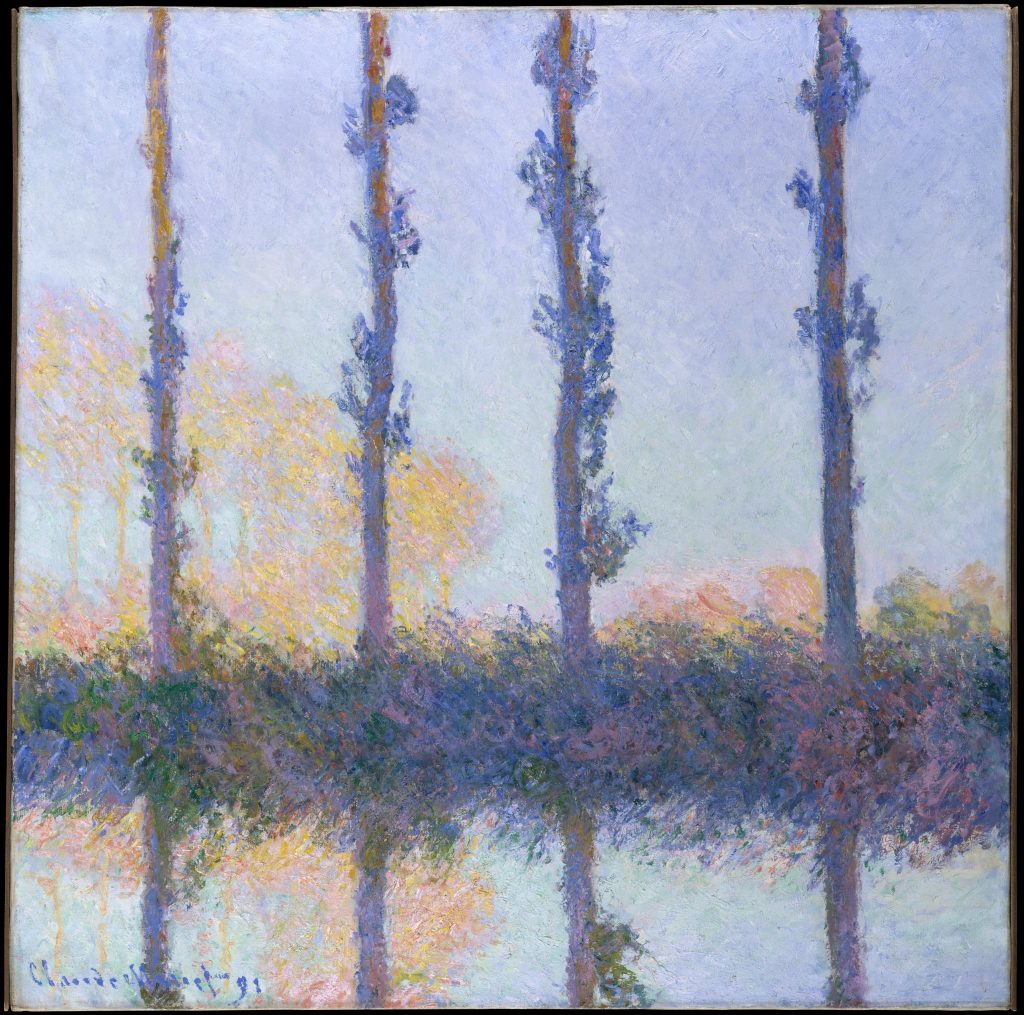
Claude Monet, The Four Trees, 1891, oil on canvas, 32 1/4 x 32 1/8 in. (81.9 x 81.6 cm) Collection of The Metropolitan Museum of Art. Image: Wikimedia Commons
JTP: What about a favorite book?
JH: Much of my reading over the past decade can be described as a search for serviceable maps of the human mind, followed by rubbernecking at accidents caused by irrational behaviors. Daniel Kahneman’s Thinking Fast and Slow is a fine example of the former, the type of mind mapping I find highly addictive. Kahneman’s lenses for understanding our extraordinary capabilities, while simultaneously identifying those pesky faults and deep biases that accompany human thought and action, help structure my own thinking. In a related way writings on decision-making in everyday life are equally intriguing and useful. Charles Duhiggs’s The Power of Habit, Dan Ariely’s Predictably Irrational, Keith Payne’s The Broken Ladder successfully illustrate complexities and contradictions when/where supposedly rational thoughts and human actions intersect, often to hilarious and/or tragic effect—endlessly fascinating stuff!
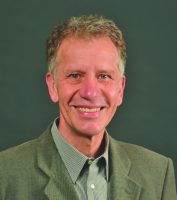
Jim Hopfensperger is a professor of art at Western Michigan University’s Gwen Frostic School of Art where he teaches foundation art. Jim’s art works have been shown nationally and internationally in over 100 exhibitions at venues including the Detroit Institute of Arts, Nelson-Atkins Museum of Art, Auckland Memorial Museum, Lever House, University of Iowa Museum of Art, University of Oregon Museum of Art, State Museum of Pennsylvania, North Carolina Museum of History, and National Ornamental Metals Museum.
Jim’s past appointments include serving as Senior Associate Dean in the College of Fine Arts at Western Michigan University, Chair of the Department of Art & Art History at Michigan State University, and Head of the Studio Art Program at The Pennsylvania State University. He has also taught at the Massachusetts College of Art, University of Massachusetts-Dartmouth, Skidmore College, University of Michigan, and North Carolina State University.
Jim is Past President of the National Council of Arts Administrators, and is an accreditation visitor for the National Association of Schools of Art and Design. He earned a MFA from University of Michigan, a MA from University of Illinois at Urbana-Champaign, and a BA from Michigan State University.


